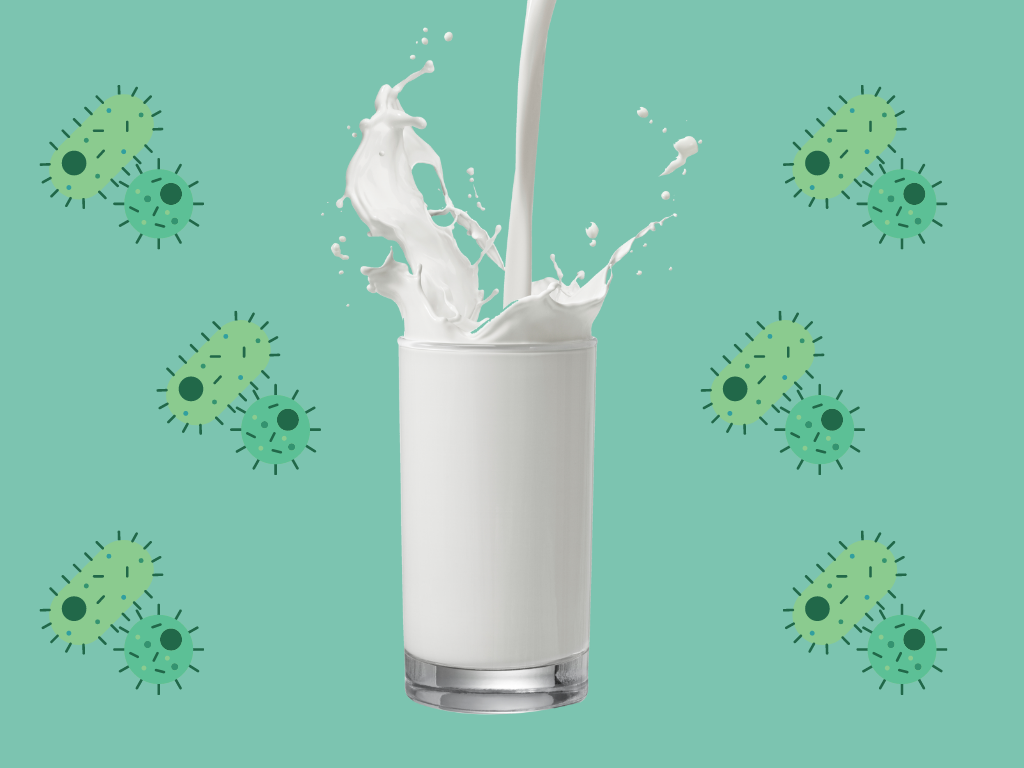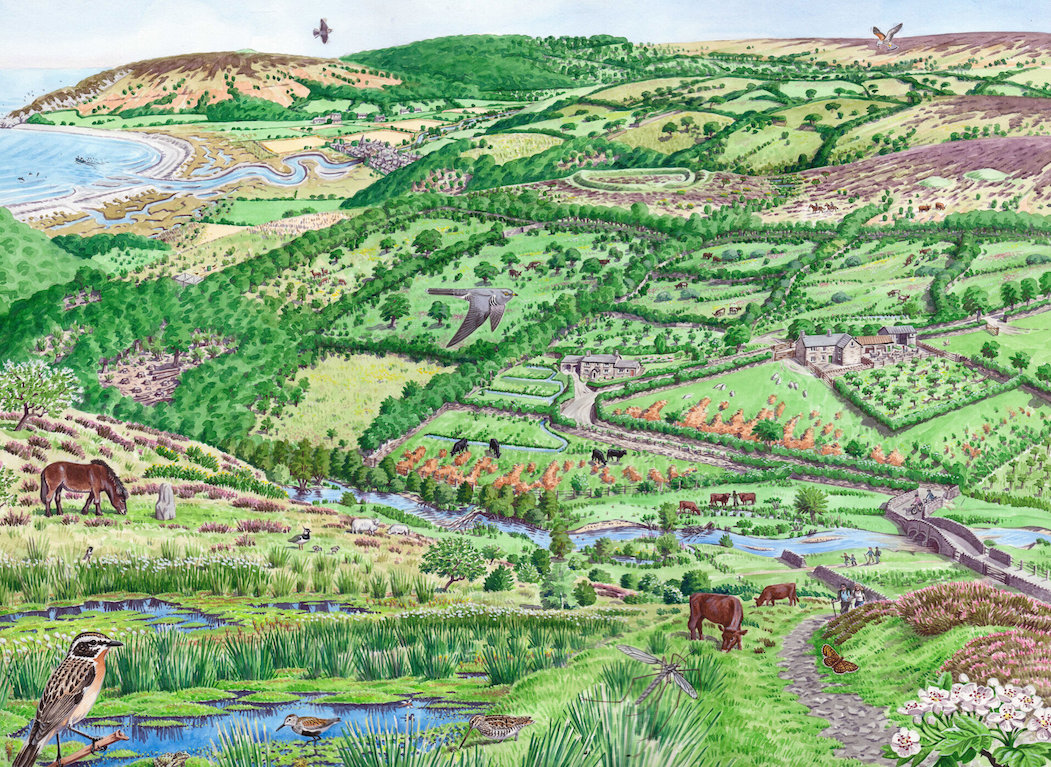It’s The Land, Stupid! This Earth Day, Land-Light Farming Is The Climate Solution We All Need To Get Behind
5 Mins Read
Farming with up to 90% less land? Precision fermentation is the climate solution to get behind to ‘Restore Our Earth’.
A few weeks ago, I went to 7-Eleven in Hong Kong and got myself a single-size cup of velvety cookies and cream ice cream. It was yummy and crumbly and took me back to my Häagen-Dazs obsession days.
The following week, I bit into a chewy, gooey chocolate chip cookie while attending a future food conference in San Francisco. It was delicious, and I wanted to ask for another one, but I didn’t want to seem greedy.
On the second day of the event, I tasted unctuous, creamy cream cheese that I wanted to eat by the spoonful -no bagel needed- and a thick, strawberry yogurt the likes of which I hadn’t enjoyed since my teens when I spent summers in France gorging on Yoplait pots.
A couple of weeks later I was back in Hong Kong attending a lunch during which I got to enjoy an egg pudding, an omelet sandwich and a moreish cheese plate of feta marinated in olive oil and thyme, Gouda-style slices alongside walnuts and apricots and some lashings of a Brie-like that melted on my tongue.
It’s been years since I’ve been able to stuff my face with cheese. I have had my fair share of perfectly good nut cheeses. I’ve also tasted some pretty yucky plant-based offerings. But real cheese? Folks, it’s been a minute.
Everything I tasted is made from proteins found in animal foods. Except none of these foods come from animals. And none of them are plant-based imitations either. Wait, what?
The companies that created these foods are making use of a familiar and inspired technology known as precision fermentation. It involves programming microorganisms (microbes) such as bacteria, yeast and fungi with DNA code to produce specific proteins like the whey protein found in dairy milk or the casein protein that makes cheese stretchy and melty.
We’ve been using precision fermentation to make insulin for Type 1 diabetics for decades. We also use the technology to make vitamins and vegetarian rennet in most commercial dairy cheese and flavor extracts used in products like fruit juices and sports drinks.
It’s not just protein either! Many of our favorite everyday foods require large swaths of agricultural land to grow.
Precision fermentation can be used to recreate the compounds in chocolate and coffee, as well as produce alternatives for edible fats like pork lard or palm oil. I have some of this oil in my pantry and I made a delicious tofu scramble with it the other week.
I’ve now tasted most of the commercially available precision fermentation foods and they are all impressive. With further iteration, it’s not hard to imagine many of these startups achieving 100% fidelity with the conventional versions.
Compared to conventional agriculture, precision fermentation requires up to 90% less land; in fact, you might call it land-light agriculture.
From where I’m sitting, that feels like an agricultural revolution, one where we are no longer constrained by a hugely valuable, limited and disappearing asset: agricultural land*.
10,000 years ago, hunter-gatherer tribes around the world change the course of humanity by developing agriculture. First with basic plant crops like wheat, barley and rice. Then by domesticating animals like cows, sheep, and pigs.
Other than water and human labor, agriculture had one main requirement: Land. And a lot of it.
All those years ago, the planet had an abundance of land, so allocating some of it to grazing animals or plant cropping to feed a few hundred thousand humans was no big deal.
Today? Agriculture takes up close to half of the planet’s habitable land (ice-free and desert-free) and 77% of total agricultural land (TAL) is dedicated to raising livestock. And these numbers are from 2019! It’s definitely worse by now.
Palm oil, which is in 50% of supermarket products, takes up 7.5% of TAL. If you combine all oilseeds, they require 38% of TAL.
The simple fact is that we’re running out of land to grow stuff. In fact, we’ve passed peak agricultural land.
Land used for farming crops requires deforestation and wildlife habitat loss, both of which deal a serious blow to biodiversity.
The extreme weather effects brought on by ever-worsening climate change mean the limited remaining supply of agricultural land is continually at further risk.

I’m here to tell you there’s a better way. Embracing food technologies like precision fermentation gives us the delicious foods we know and love without the untenable land costs their production entails in our industralized agricultural era.
Land used for agriculture is land that we are not rewilding and reforesting, two key climate mitigation strategies. In fact, rehabilitation of these nine wild animal species could help capture up to 95% of the CO2 needed for global warming to stay under 1.5 degrees Celsius.
Given the severity of the climate emergency we are living through, the growing global population (10 billion by 2050), a rapidly developing Global South which is lifting hundreds of millions of people out of poverty into the middle class and the biodiversity crisis we are facing, we have a responsibility to support agricultural innovation that can offer everyone on the planet healthy, nutritious, affordable food.
Land-light solutions like precision fermentation can unlock this future.
Earth’s Day theme this year is ‘Restore Our Earth’. Folks, that means giving the planet and its wild, non-human inhabitants back their land.
This story is part of Covering Climate Now, a global journalism collaboration strengthening coverage of the climate story.
Lead image: A rendering of a possible rewilded and restored future by Norfolk-based wildlife artist Richard Allen commissioned by the Exmoor National Park Authority depicting the rolling landscape around Porlock Bay on the rugged Somerset coast in the UK – see original source.
*A measure of all land on earth used for agriculture, including arable land, which can be used for crop farming, permanent crops (like fruit orchards and vineyards) and grazing land (for livestock animals).




